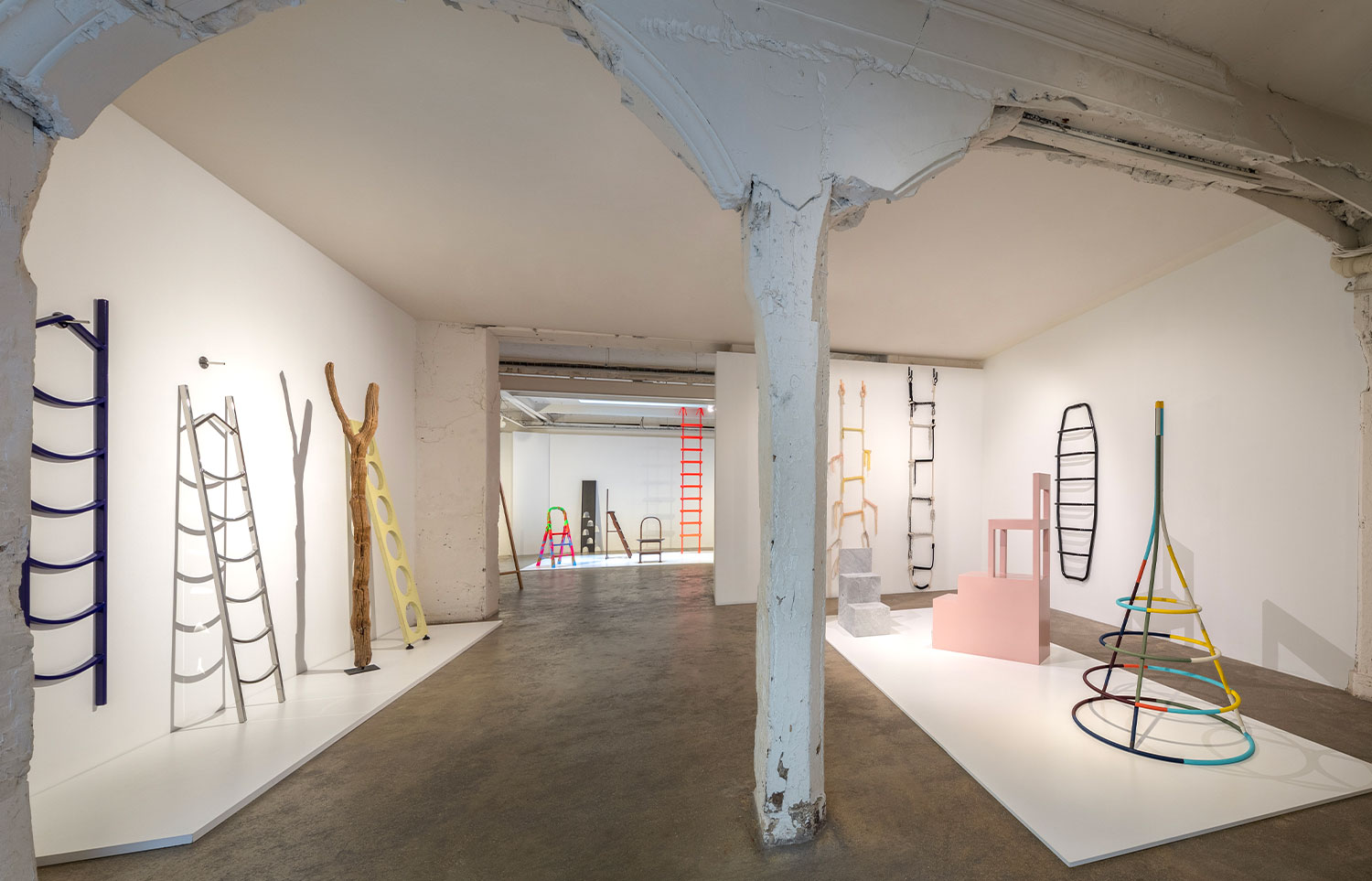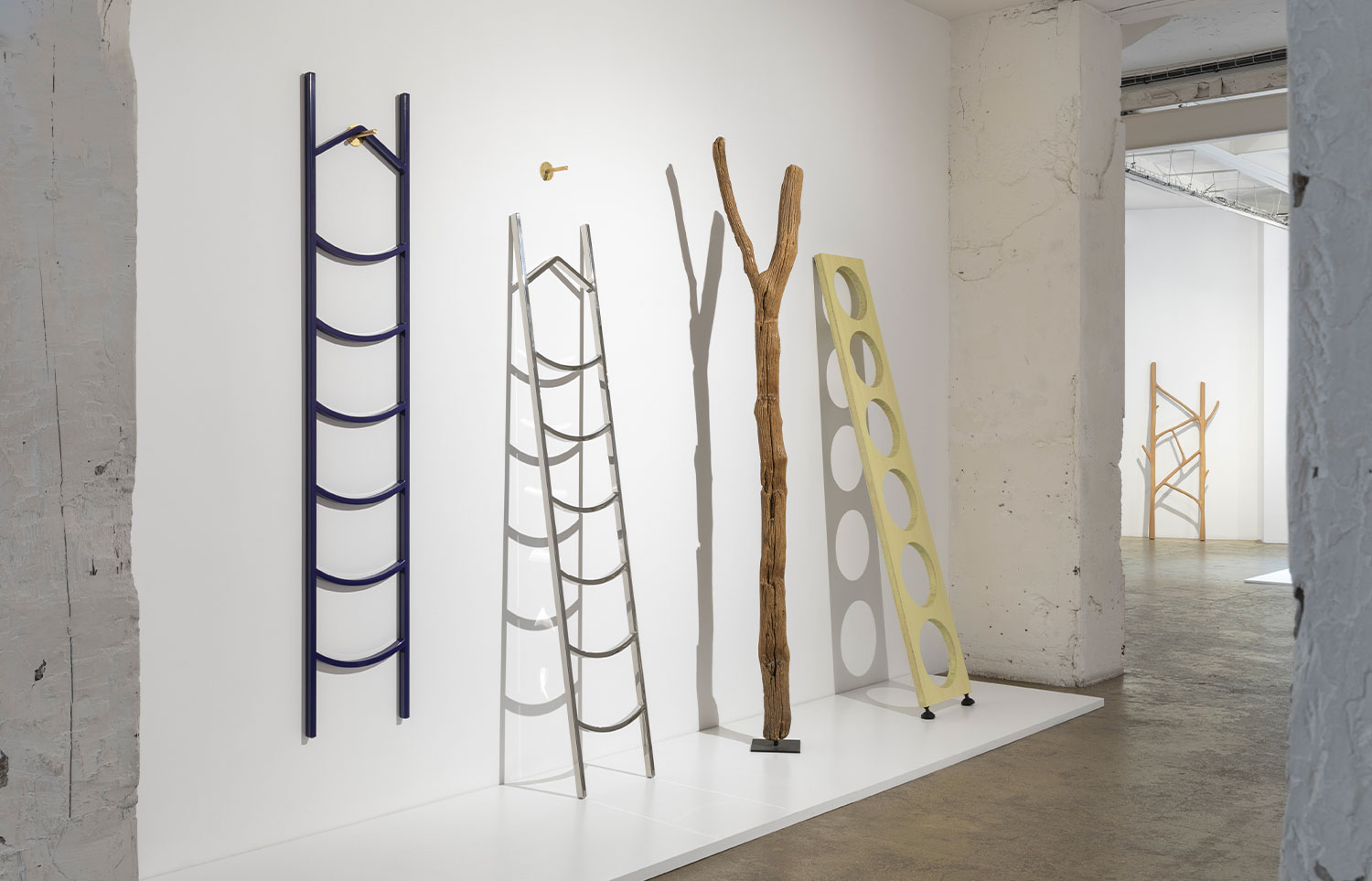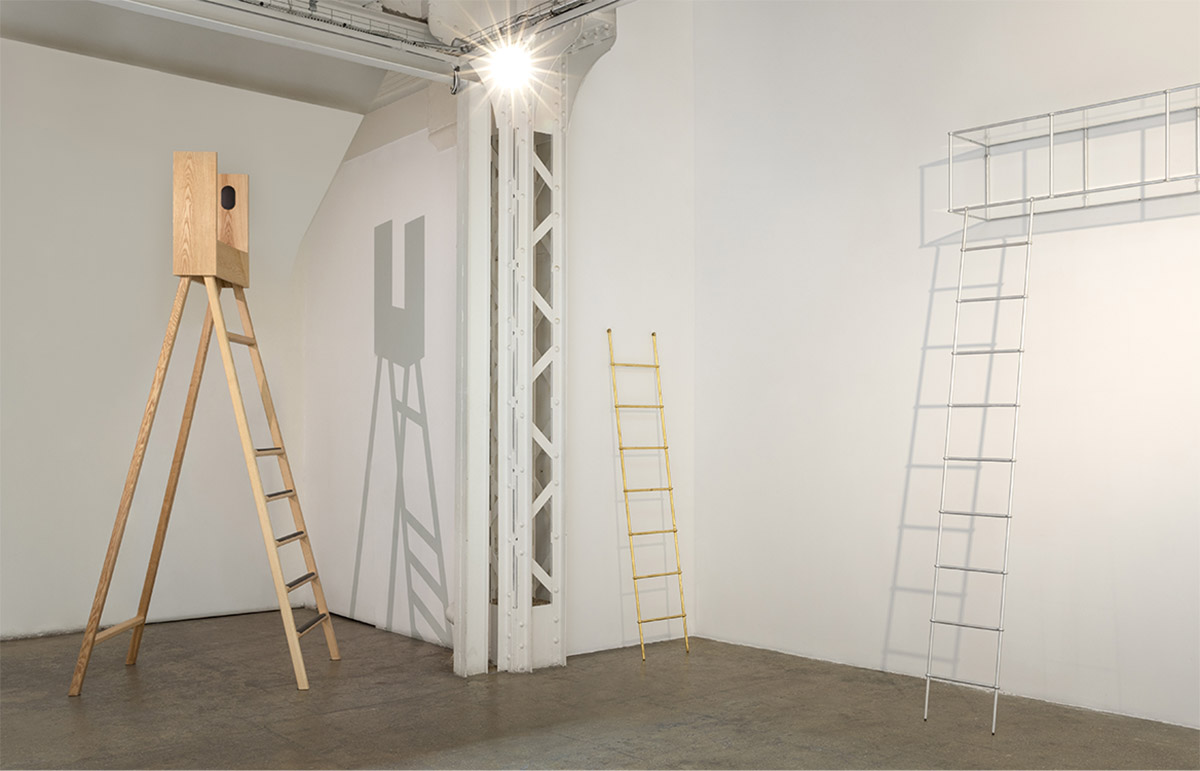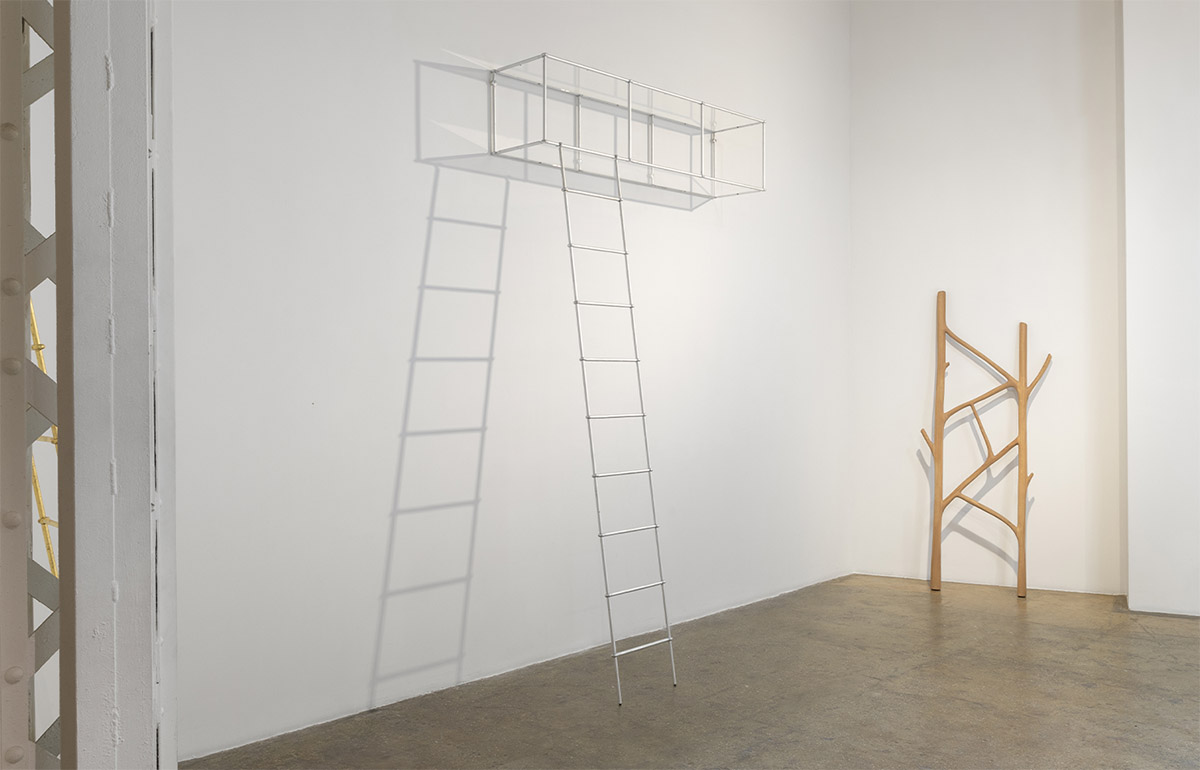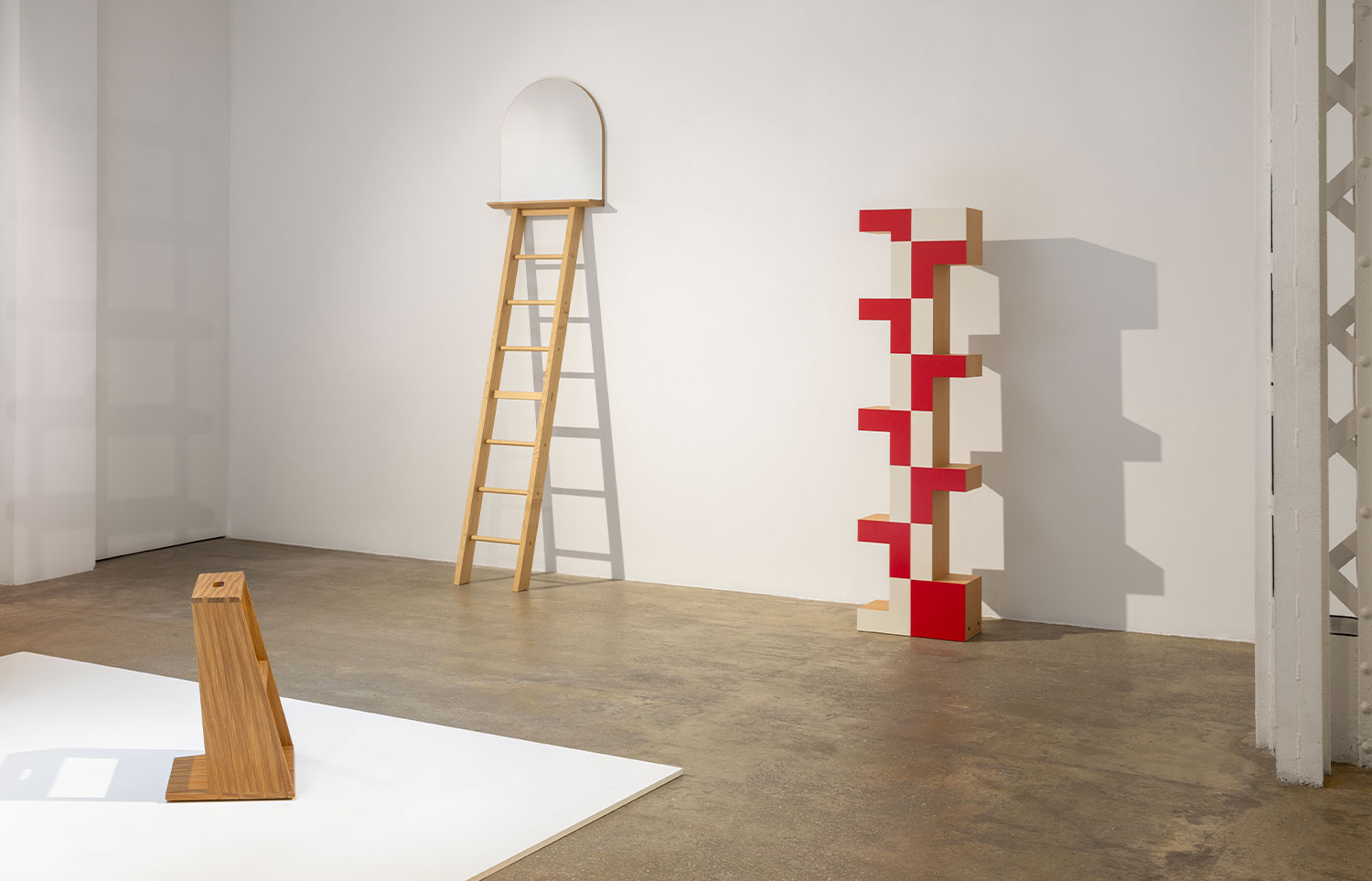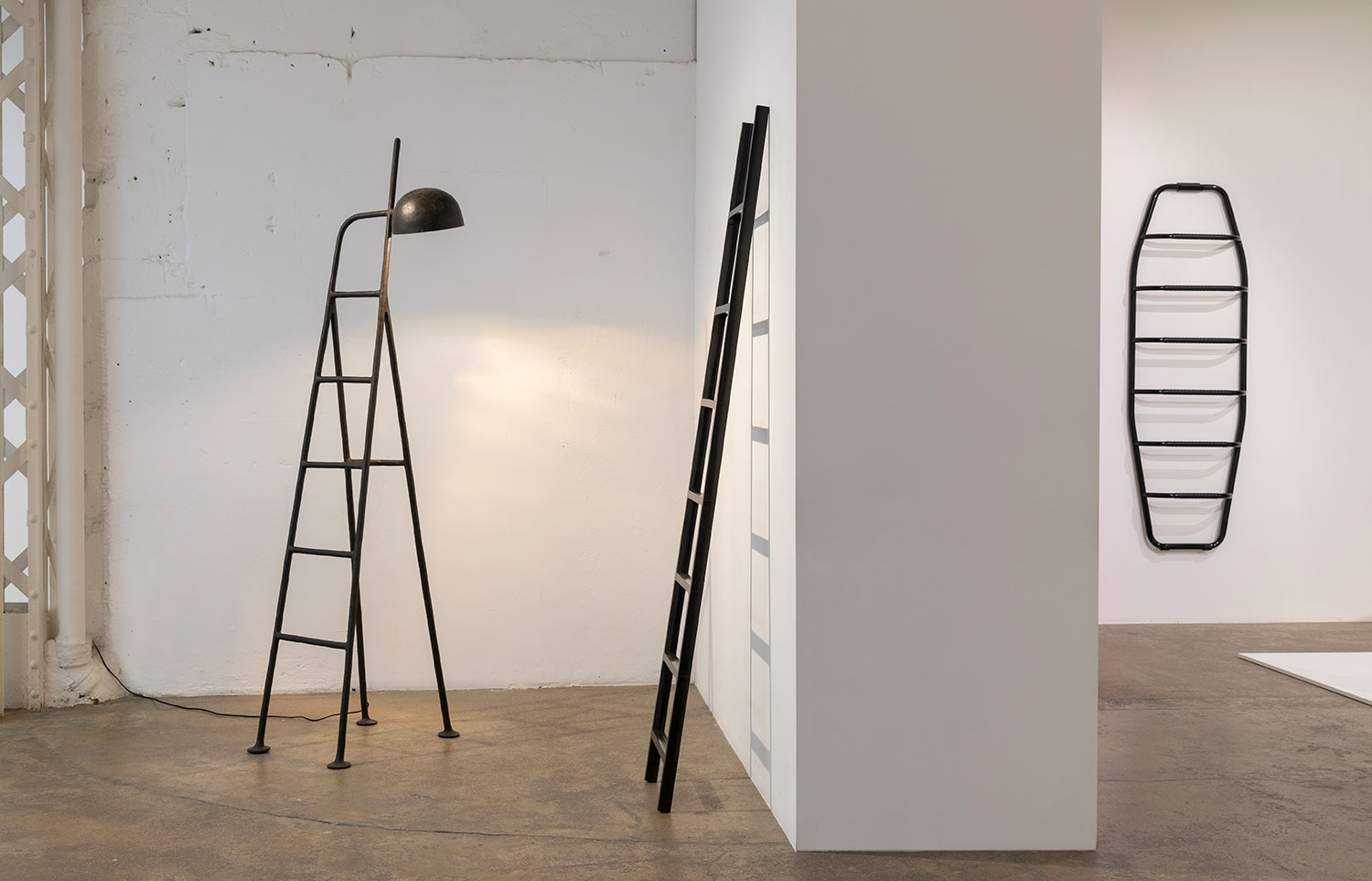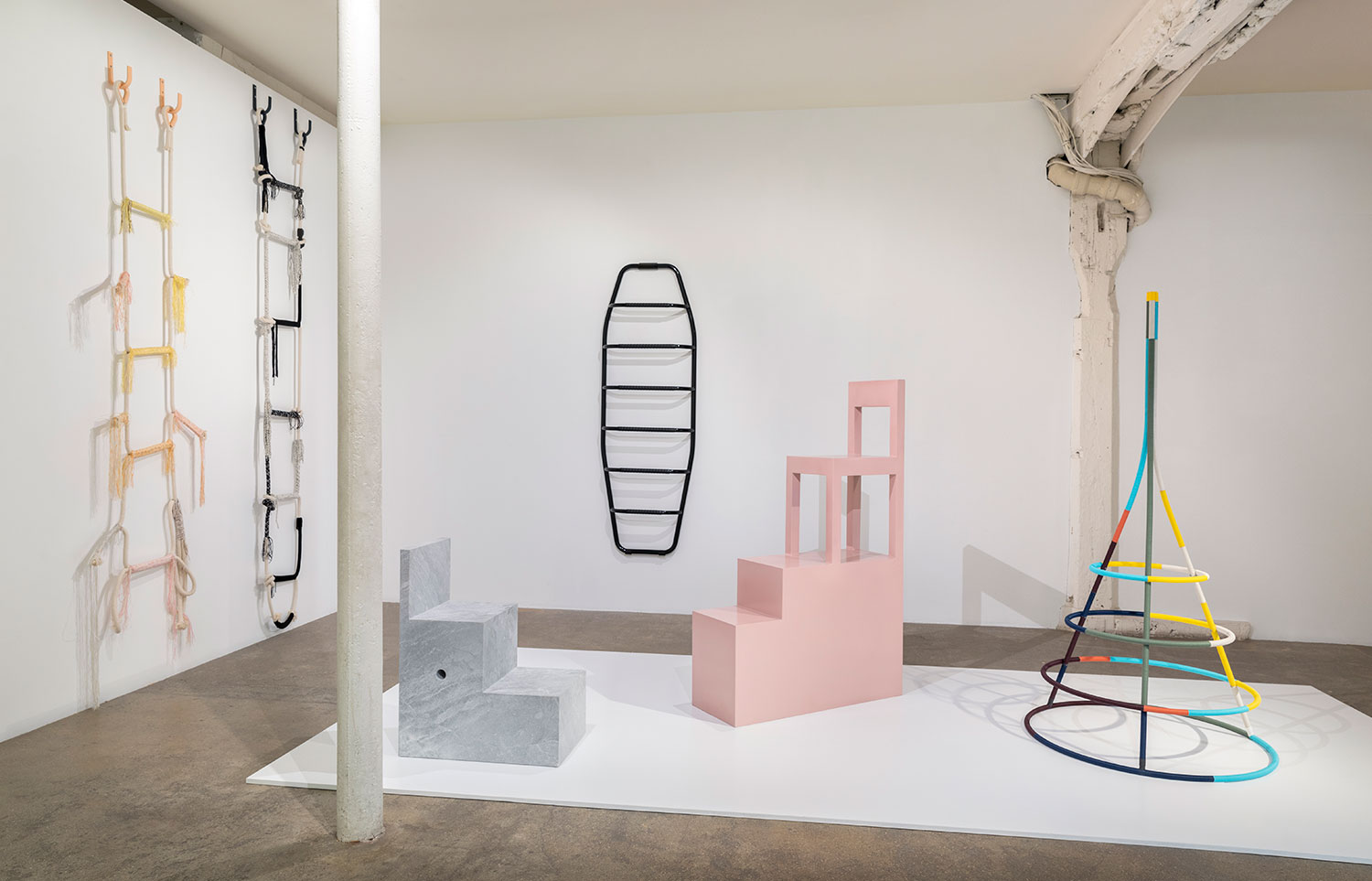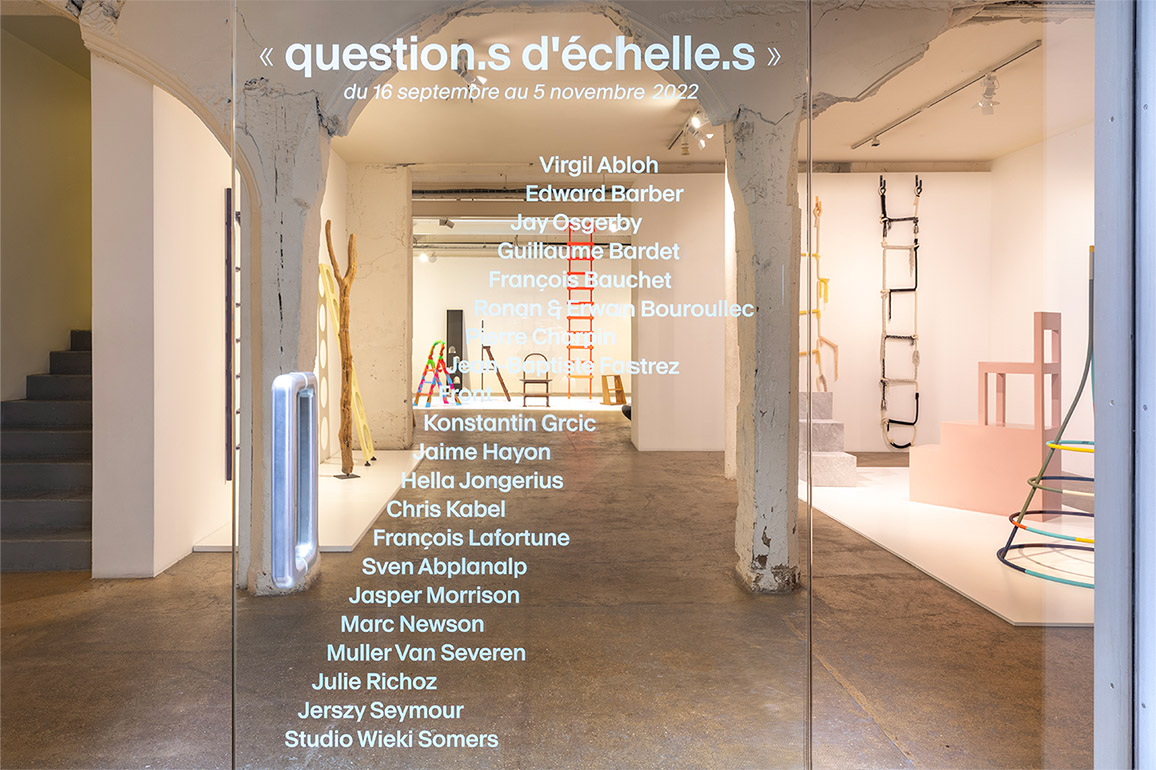With Virgil Abloh, Edward Barber and Jay Osgerby, Guillaume Bardet, François Bauchet, Ronan and Erwan Bouroullec, Pierre Charpin, Jean-Baptiste Fastrez, Front, Vidya Gastaldon, Konstantin Grcic, Jaime Hayon, Hella Jongerius, Chris Kabel, François Lafortune, Sven Abplanalp, Alessandro Mendini, Jasper Morrison, Marc Newson, Muller Van Severen, Julie Richoz, Jerszy Seymour and Studio Wieki Somers.
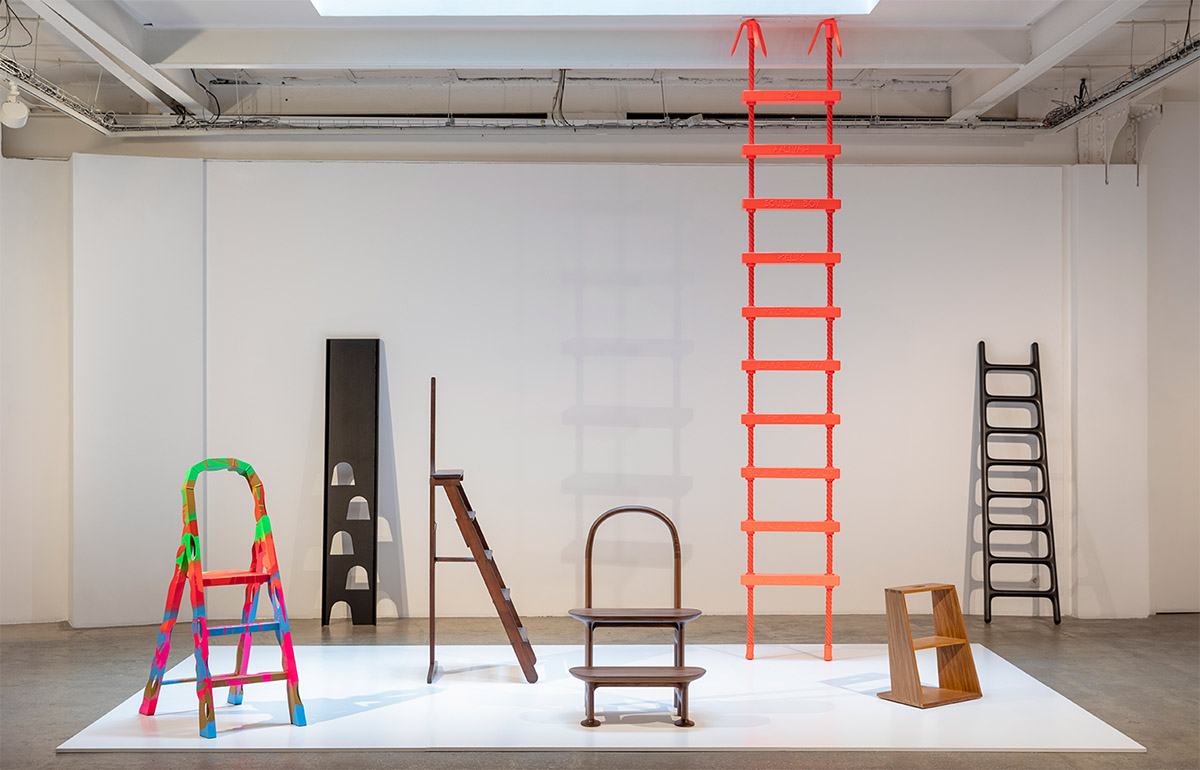
After several typological exhibitions dedicated to the mirror (2003), the stool (2007), and the necklace (2012), Galerie kreo presents step by step (question.s d’échelle.s), a new panorama of contemporary design taking the form of a stylistic exercise. Historical pieces and iconic ladders conceived by Alessandro Mendini and Marc Newson come into dialogue with new creations by the gallery’s designers, from Virgil Abloh to Hella Jongerius and Jerszy Seymour. In the service of a simple and movable object—made up of vertical mounts and horizontal steps that allow for the act of ascent and descent—each designer proposes a specific ladder, emblematic of their research.
Several complementary approaches are required to grasp and connect the diversity of the many ladders created between the 19th Century and 2022 and assembled in this exhibition. First of all, the historic approach, which leads us from the intensely formal and symbolic research of a Dogon ladder or a Shaker stepladder to the architectural purity of the 1950s and the utopian visions of Alessandro Mendini (“Impossible Furniture” collection, 1976) and Vidya Gastaldon (Healing Object (Chakra Échelle), 2019). More recently, Marc Newson’s Carbon Ladder, conceived in 2008, constitutes the matrix of this exhibition, as it was the first ladder produced by Galerie kreo. As Marc Newson elaborates, “My idea was to take a mundane functional implement—the ladder—and turn it into an esoteric, airy, sculptural object that serves its intended purpose while being exceptionally sturdy and lightweight.” Undoubtedly, thanks to the simplicity and potentialities of the ladder-object, each of them is a portrait of its designer, their sensibility and, perhaps, their era, shadows included*.
The technical approach is immediately obvious, distinguishing self-supporting ladders from those that are fixed to the wall or hanging from the ceiling. The difference is significant because of the implications in terms of reach, materials, and structure. Hella Jongerius’ suspended rope ladders (Twisted Steps, 2022) allow her to pursue her textile research, full of lightness, while the selfsupporting pieces are resolutely more furniture-like, such as Konstantin Grcic’s London Calling (2014), François Lafortune and Sven Abplanalp’s Aerophone listening ladder, Jaime Hayon’s Altos Staircase, or Guillaume Bardet’s Trait d’union – Hyphen (all 2022). Some of them even become stepladders, technical or psychedelic (Jasper Morrison, La Scala, 2022; Jerzsy Seymour, Acid Tracks Ladder, 2022), or archetypal stairs (Konstantin Grcic, Volume W, 2018).
The typological approach is obviously just as crucial: what, in any given ladder, suggests the idea of ladder, what does, in every ladder, suggest the very idea of a ladder? Its strict definition, or, on the contrary, its renewal, its subversion, its hybridization? Some of these aspects simply express the ladder in its pure state, even in its natural state in the case of Front (Tree Ladder, 2022), while others are more playful, such as the Saqqarah ladder-sarcophagus (2022) by Jean-Baptiste Fastrez. By taking on other functions, the ladder becomes a piece of furniture “in itself” and no longer just a “transitional object”. This is the case with Pierre Charpin’s Lassù and its mirror at the top, with Ronan and Erwan Bouroullec’s Ciels ladder-shelves, or with Virgil Abloh’s ”WORLD LEADERS” manifesto ladder, 350 cm high (all 2022). By showcasing the names of iconic black figures in the history of the civil rights struggle or in popular culture. As for the proposals of Edward Barber and Jay Osgerby (Yo Yo, 2022), François Bauchet (Level, 2022), Chris Kabel (Nodes, 2022), Muller Van Severen (Ladder, 2022), and Julie Richoz (O’Step, 2022), they renew the notions of interval and reach, showcasing non-standard steps, deconstructing traditional structure, playing with perception and proportions.
By commissioning more than 20 designers to rethink the form, the materials, the use and implications of the ladder, Galerie kreo offers not a second life to this simple and useful everyday object, but rather a visible existence. Just think about where most ladders are stored to understand that they are some of the least-cared-about objects of contemporary design. The ladders gathered in step by step (question.s d’échelle.s) will be visible, waiting to be climbed and descended.
Clément Dirié
* From Jacob’s Ladder in the Bible to Richter’s magnitude scale, there is enough to write a small cultural opus on échelle/ladder/scale. Since we are talking about ladders and shadows, let’s just recall the infamous photograph taken in 1945 in Hiroshima showing the shadow of a ladder frozen to the wall.
